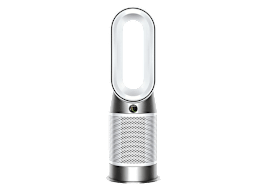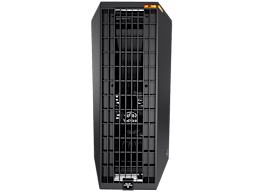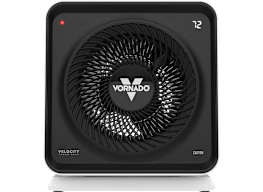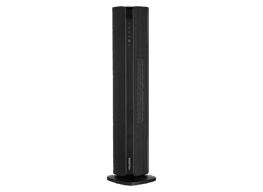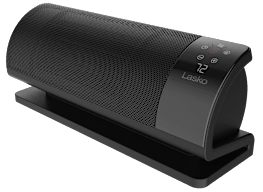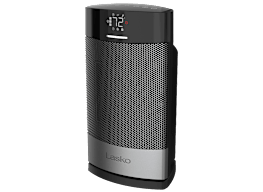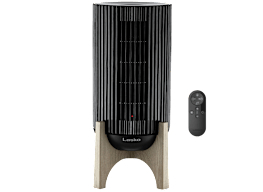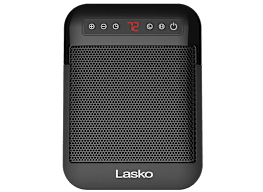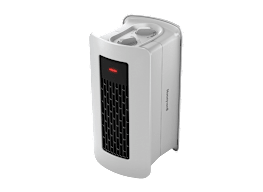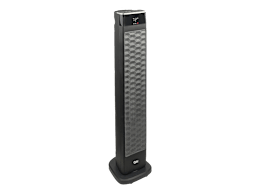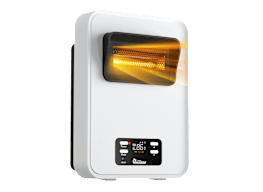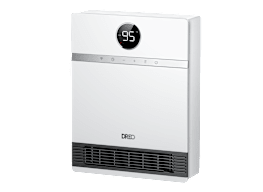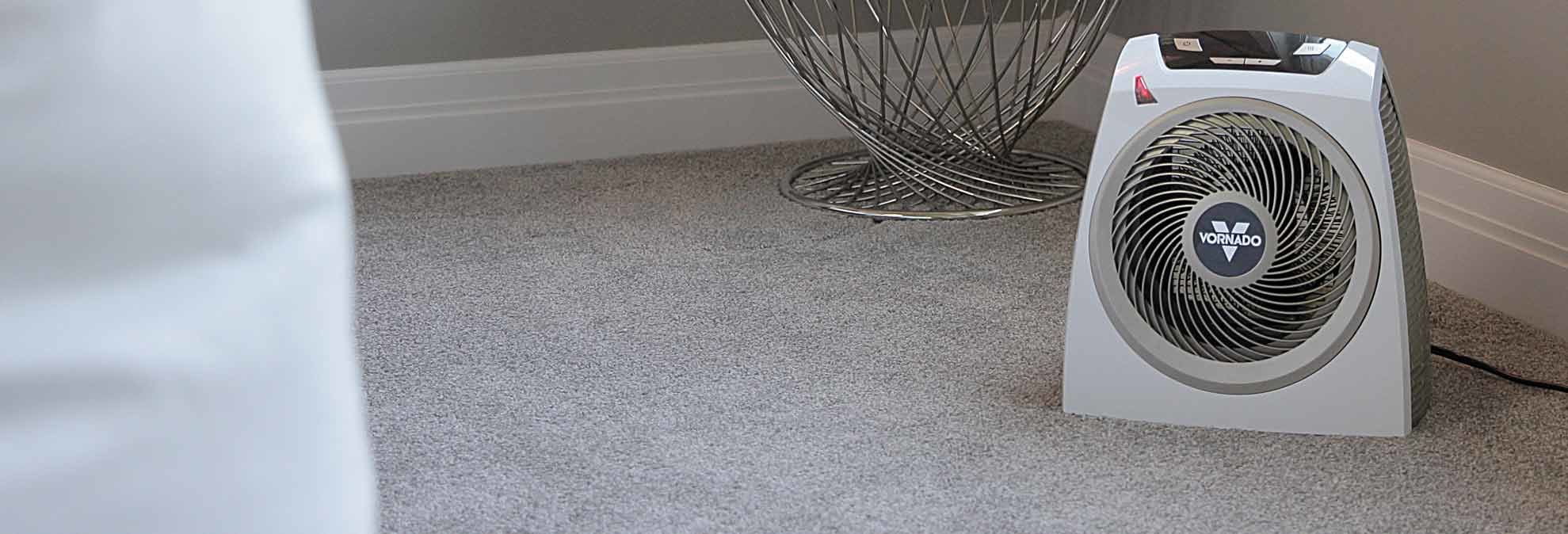
Space Heater Buying Guide

Home & Appliances Writer
A space heater can come in handy during a fall evening chill, an arctic winter blast, or even a damp spring thaw. It can warm your drafty bonus room, your frigid basement, or your chilly home office. If used judiciously as a supplemental heating source, it may even save you money.
But how do you know which space heater is right for you? It will depend on the size of the space you need to heat, how quickly you want it to warm up, and how much you’re willing to spend.
We tested nearly 90 space heaters and found that the highest-scoring models in CR’s space heater ratings can heat a family room in about 15 minutes.
Read on for a closer look at how CR tests space heaters, which types, brands, and features to consider, and other intel you need to find the best space heater for your situation. Once you know what you require, check out our picks for the best space heaters from our tests and specific recommendations for space heaters for your home office, the quietest space heaters, and the best space heaters priced at $100 or less.
How We Test Space Heaters
We evaluate how well space heaters heat a standard-sized room (204 square feet) in 15 minutes and how effectively they warm a nearby person (reflected in our ratings as “spot-heating”). “Our spot-heating test uses a mannequin wired with sensors,” says Samantha Ostrander, who oversees our space heater lab. “We want to know how your body will feel when you’re sitting within 4.5 feet of the appliance.”
CR’s space heater testers also assess the noise level of each machine while running, as well as its ease of use and portability (how easy it is to move around). Heaters with oscillating fans tend to be noisiest, but they’re still relatively quiet and deliver heat more evenly than heaters without fans.
Safety is critical to our space heater ratings. Each model undergoes three tests to determine its potential for causing a fire. The results of the three tests—tip-over, overheat, and drape—are combined to determine our overall fire safety score. Here’s what they entail:
- For the tip-over test, a unit gets a perfect score if it shuts off in less than 10 seconds after being tilted on its face. (Many shut off instantly.)
- For the overheat test, the heater is wrapped in fabric, causing heat to build up in the unit. Models that shut off in under 2 minutes without scorching the fabric earn a perfect score.
- In the drape test, a portion of the heater’s outlet is covered with cloth. Models that shut off within 2 minutes or run for 30 minutes without scorching the fabric get a perfect score.
How to Choose a Space Heater
Determine your budget. The models in CR’s tests cost $18 to $500. But that doesn’t mean a high price always correlates with top performance. In fact, nearly half of the top-rated space heaters in our tests cost $75 or less.
You may see cheaper, lower-watt “personal heaters” on the market, but they typically underperformed in our past tests. Lower-watt heaters are generally hit or miss when it comes to performance. For example, the 900-watt Vornado Tempa Nursery heater performed very well in our tests, while the 800-watt Black+Decker BHRO608 was, by far, the worst-rated space heater overall.
A higher price will often yield a quieter machine, a longer warranty, and additional features such as timers and remotes. But you can find an effective space heater in a wide price range. If you’re looking for a good, budget-friendly model, check out our roundup of the best space heaters for $100 or less.
Factor in portability. If you’re planning to move a space heater from room to room, you’ll want one that’s lightweight and has a handle. If you’re looking for a larger space heater to heat a big room, for example, try one with wheels for easier movement.
Identify which features you want. A programmable thermostat or timer allows you to set the heater’s on and off times. (Use caution with these features, however, and don’t be tempted to leave a space heater running while you’re asleep.) A remote control lets you adjust the heater from afar. These features are nice to have, but they will add to the cost of your space heater.
Look for key safety features. Space heaters are, of course, designed to be hot. But they shouldn’t burn you or create a fire hazard. Look for a unit with a sensor that shuts the heater off if it overheats. A shutoff switch that activates if the heater tips over is a useful addition for taller models, especially if kids and/or pets use the room.
Look for a safety certification. Shop for a space heater with a label from a recognized testing laboratory, such as UL Solutions, ETL (Intertek), or CSA (Canadian Standards Association), verifying that its construction and performance meet recommended U.S. safety standards.
Types of Space Heaters
There are various types of space heaters, ranging from small electric models that can sit on a desk to large propane or natural gas-fueled units designed for industrial use. CR no longer tests propane-fueled space heaters, which can produce deadly carbon monoxide. While some models have oxygen depletion sensors and are intended to be safe for indoor use with proper ventilation, CR doesn’t consider them worth the risk.
Electric space heaters designed for home use heat spaces using convection or radiant heat, or a combination of the two. Convection heaters warm the air and may use a fan to circulate it around a room. They’re most effective at dispersing heat throughout a space. Radiant heaters warm people and objects directly, similar to sunlight. They’re good for spot-heating, but their heating elements can glow red-hot and pose a greater burn or fire risk if a flammable object, such as a curtain, is too close.
Ceramic Heaters
Ceramic space heaters are the most common type of convection units. An interior ceramic element warms the air, which may be circulated by a fan. Most space heaters in CR’s ratings are ceramic models, which are widely available in a broad price range.
Infrared Heaters
Infrared or radiant heaters are marketed for spot-heating and can be identified by the red glow they produce. They can pose a higher burn and ignition risk if placed too close to objects.
Micathermic Heaters
Micathermic heaters use panels composed of the mineral mica to generate both convective and radiant heat. They heat up quickly, spread warmth evenly, and usually have a slim panel design. The panel can get quite hot. CR currently doesn’t test micathermic heaters.
Radiator Heaters
Oil-filled radiators are electric convection units that heat sealed interior oil to create warmth that disperses slowly and steadily into a room. They’re quiet and provide long-lasting heat. The surface can get very hot, carrying a higher burn risk, especially for children and pets. But because there’s no exposed flame or glowing element, they’re less likely to ignite nearby objects. CR no longer tests radiator heaters.
How to Shop for a Space Heater
With insights from rigorous testing, Consumer Reports' experts tell you what you need to know before you buy.

How to Use a Space Heater Safely
Our experts, along with the pros at the Association of Home Appliance Manufacturers and the National Fire Protection Association, offer the following safety tips.
- Place the heater on a hard, level, and nonflammable surface.
- Establish a 3-foot kid- and pet-free zone around a heater, and never put one in a child’s room.
- Keep the space heater at least 3 feet away from combustible materials, such as furniture, bedding, and curtains. A taller heater may need to be even farther away.
- Don’t use a heater in a workshop or garage near paint, gas cans, or matches.
- Turn the heater off when you leave the room or go to bed.
- Don’t place a rug, carpet, or furniture over a space heater cord, as this can cause damage or overheating.
- Unplug the heater when it’s not in use by pulling the plug straight from the outlet. Check the cord for damage periodically, and don’t use the heater if the cord is frayed or worn.
- Don’t plug another electrical device or an extension cord into the same outlet as a heater, as this can cause overheating.
- Install working smoke alarms on every level of your home and in every bedroom, and test them monthly.
- Be wary of using space heaters in bathrooms, where wet floors and splashes can occur. Make sure your bathroom is equipped with ground-fault interrupter (GFCI) outlets, and try to find a space heater with an appliance leakage current interrupter (ALCI) plug, which provides additional protection against electric shock.
- Don’t use a space heater outdoors or on a patio, where it can collect dust and dirt or be affected by the elements.
- If you think your space heater is an older model, consider replacing it with a new one.
Space Heater Features
Check out these space heater features that can help you stay safe and cozy on cold days.
- 1
- / 6
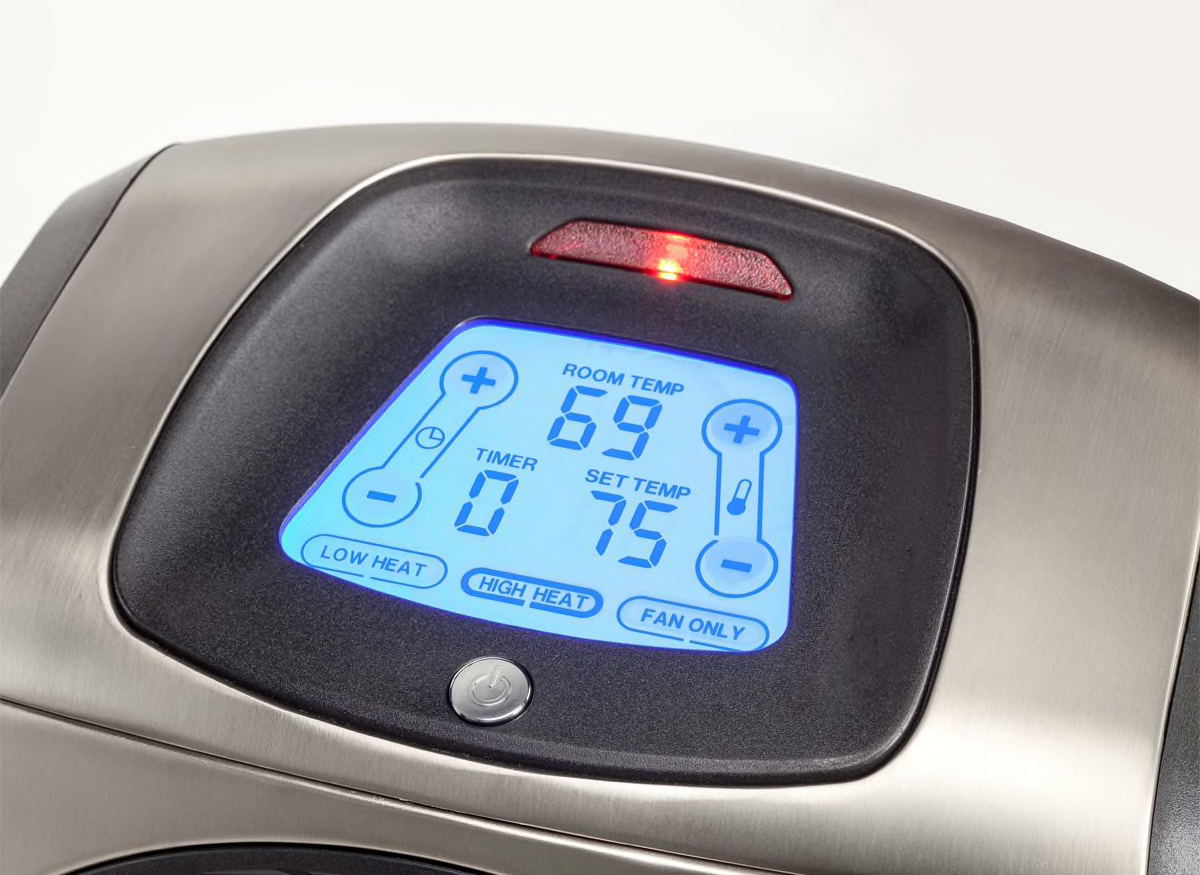
Thermostat
A thermostat maintains the temperature you set, saving you the hassle of turning the heater on and off as the room temperature varies. Heaters with multiple output settings conserve energy by letting you choose the lowest setting that keeps a room comfortable.
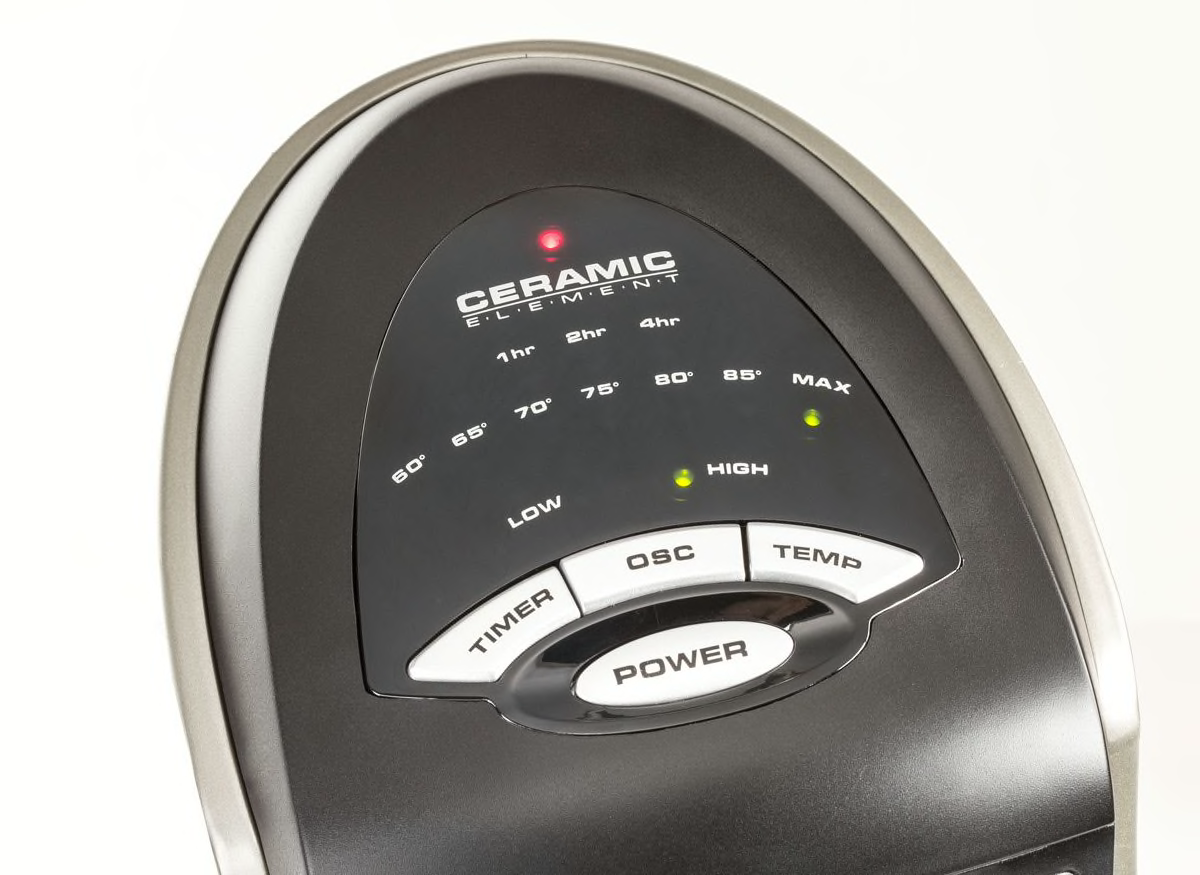
Timer
A timer lets you set the time the heater operates and is a good safety feature to ensure that it turns off when you leave the room. Using a timer on your space heater can also save you money. But don’t let a timer lure you into a false sense of security. Operate the timer safely while you’re awake. Don’t rely on the timer to turn the space heater off as you sleep.
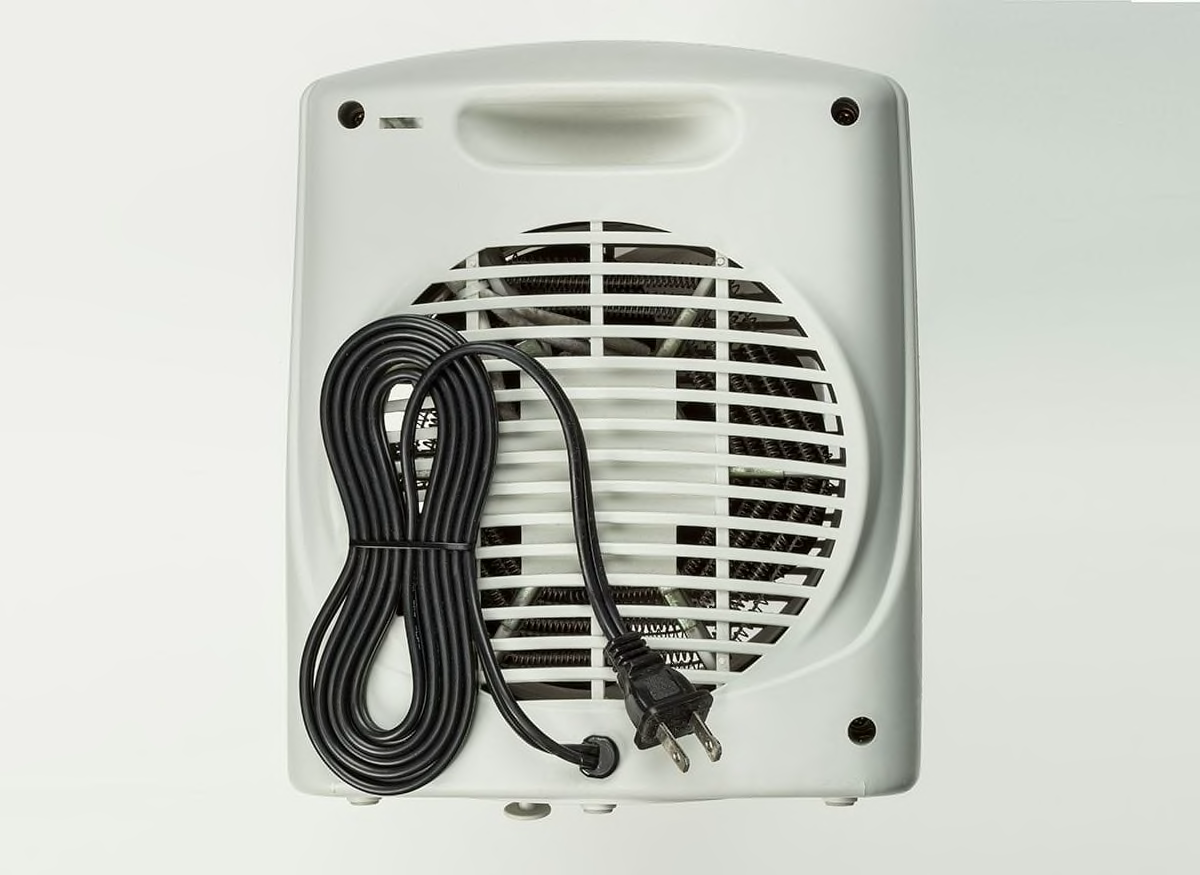
Power Cord
Look for a model with a cord that’s at least 70 inches long. This provides more flexibility for placement, but remember that heaters should always be placed on the floor for safety reasons. Make sure the space heater is kept away from anything flammable, such as a couch, curtains, or your bed.
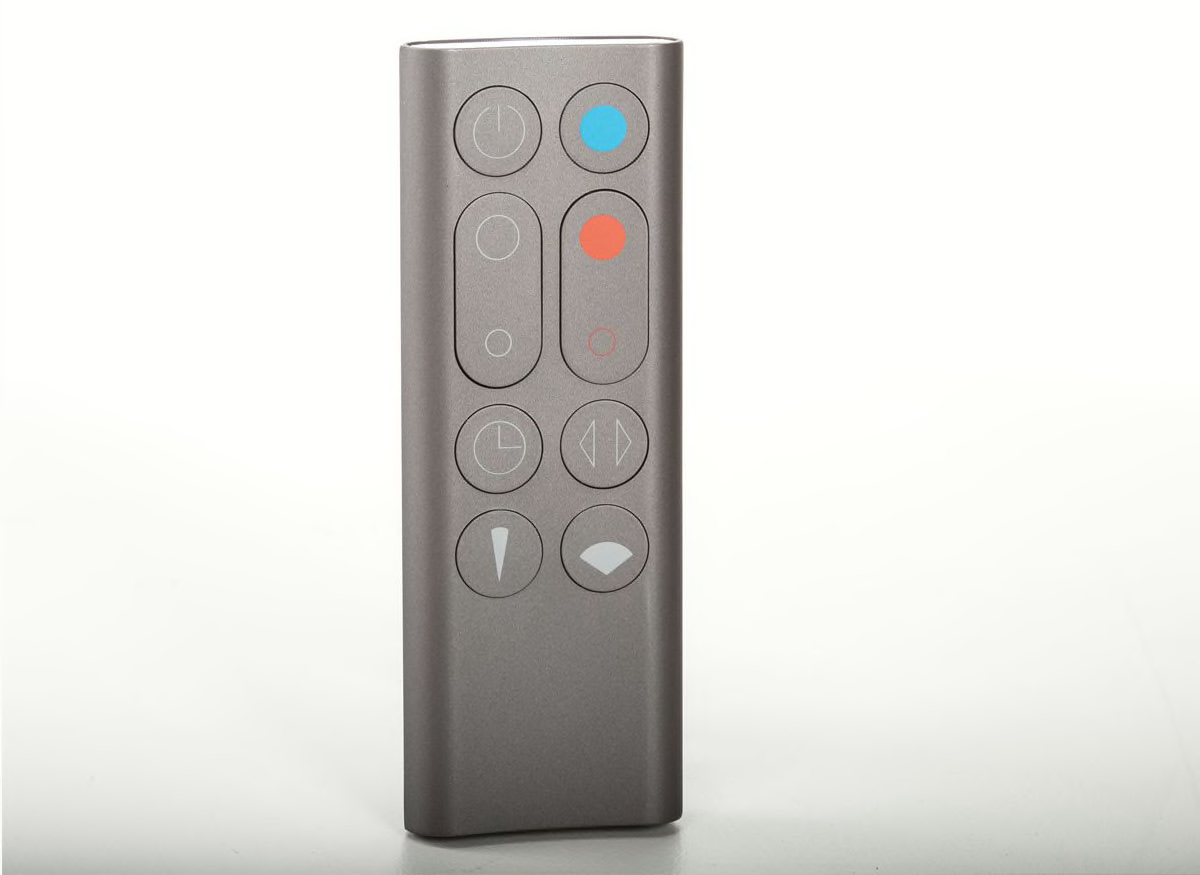
Remote Control
Because the heater should be placed on the floor for safe operation, a remote allows you to operate it without having to bend over.
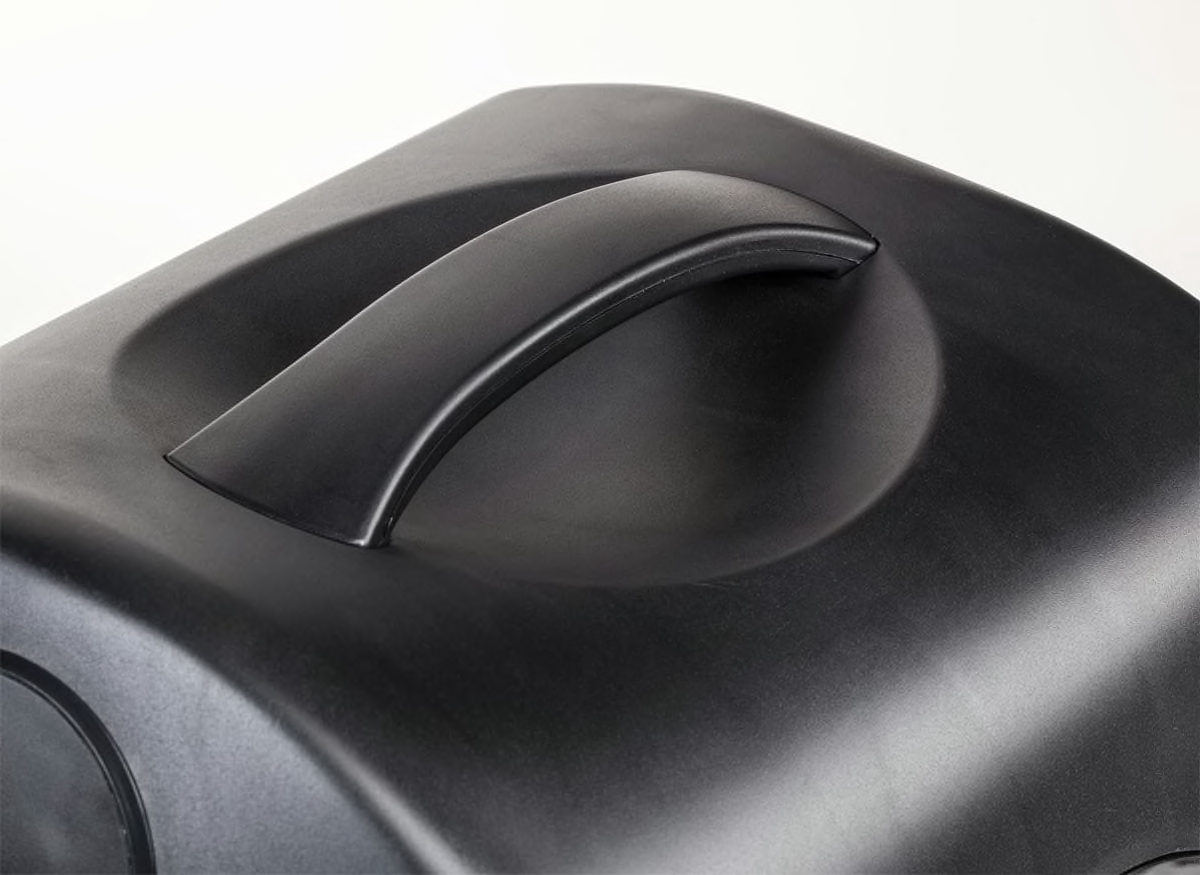
Handle
If you’ll be moving the heater from room to room, look for one with wheels, or a lightweight model with a handle that provides a safe grip.
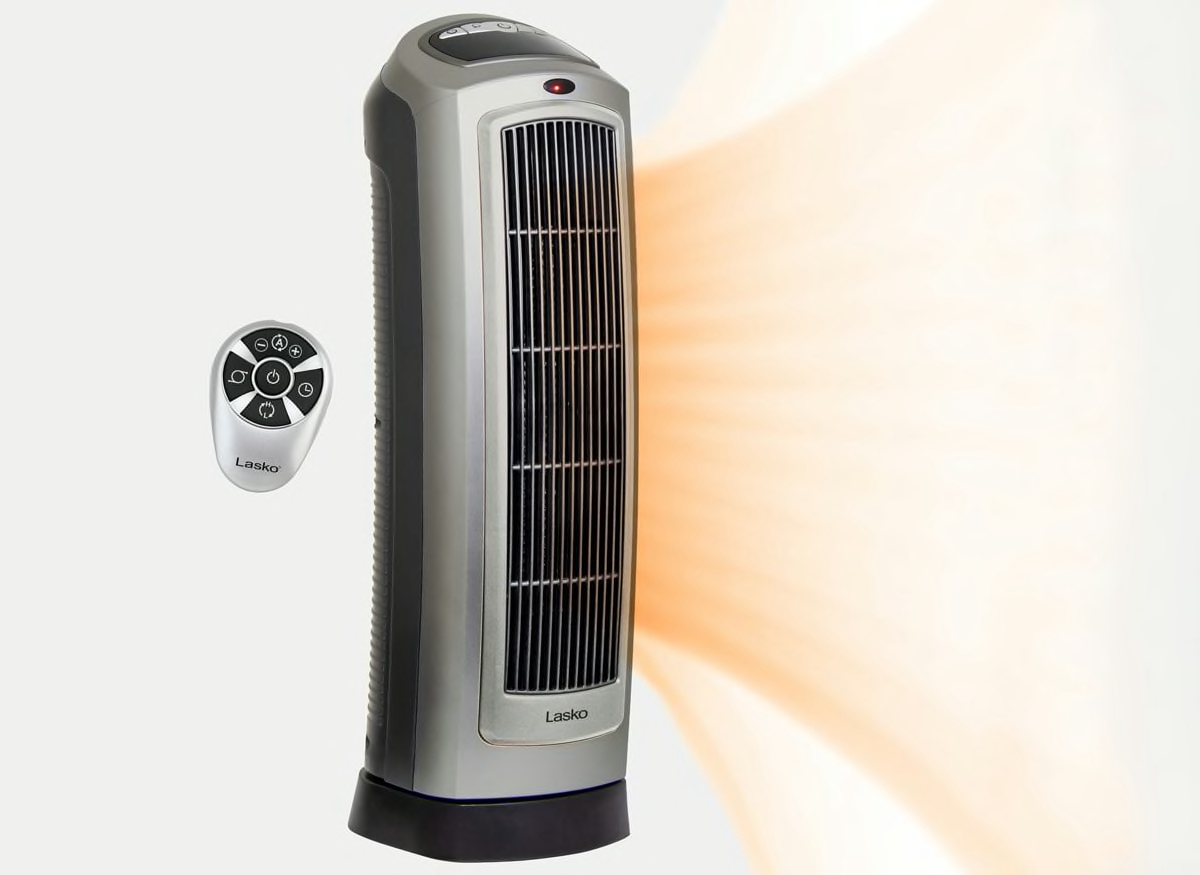
Fan
Many space heaters are equipped with fans that help distribute heat more quickly. Some models have fans that oscillate for more even heating.
Thermostat
A thermostat maintains the temperature you set, saving you the hassle of turning the heater on and off as the room temperature varies. Heaters with multiple output settings conserve energy by letting you choose the lowest setting that keeps a room comfortable.
Timer
A timer lets you set the time the heater operates and is a good safety feature to ensure that it turns off when you leave the room. Using a timer on your space heater can also save you money. But don’t let a timer lure you into a false sense of security. Operate the timer safely while you’re awake. Don’t rely on the timer to turn the space heater off as you sleep.
Power Cord
Look for a model with a cord that’s at least 70 inches long. This provides more flexibility for placement, but remember that heaters should always be placed on the floor for safety reasons. Make sure the space heater is kept away from anything flammable, such as a couch, curtains, or your bed.
Remote Control
Because the heater should be placed on the floor for safe operation, a remote allows you to operate it without having to bend over.
Handle
If you’ll be moving the heater from room to room, look for one with wheels, or a lightweight model with a handle that provides a safe grip.
Fan
Many space heaters are equipped with fans that help distribute heat more quickly. Some models have fans that oscillate for more even heating.
Space Heater Brands
Black+Decker designs products for every part of your home, including power tools, kitchen appliances, air conditioners, air purifiers, dehumidifiers, and a variety of electric ceramic and fan-forced space heaters ranging from $35 to $100. Its space heaters are sold at national retailers like Amazon, Home Depot, Target, and Walmart.
Comfort Zone offers fan-forced, ceramic, infrared, and electric radiator space heaters from $20 to more than $200. Its products boast safety features such as overheat sensors, tip-over switches, and stay-cool housings, as well as energy-saving technology. They’re sold at Ace Hardware, Amazon, Walmart, Wayfair, and camping and tool stores.
DeLonghi sells mostly convection heaters in the ceramic category, with models covering most types but primarily oil-filled and micathermic, in which the elements are covered. The products are sold at Amazon, Home Depot, Lowe’s, Sears, Walmart, and many online retailers. Prices range from about $60 to just over $200.
Founded in 1993, Dyson is a British company that designs and manufactures vacuum cleaners, fans, heaters, humidifiers, air purifiers, lights, hair dryers, and styling tools. Products are sold directly through Dyson and at many major retailers, including Amazon, Bed Bath & Beyond, Best Buy, and Target. Dyson’s design-centric, high-tech space heaters are priced from about $500 to $950.
Energy Wise Solutions offers a range of infrared, portable Heat Storm space heaters, available in up to 1,500 watts, featuring touch screens and sleek matte black or camouflage designs. Energy Wise claims that the heaters’ dual-wall construction, heat cube technology, and quartz infrared technology heat rooms faster and automatically reduce power spikes and temperature fluctuations. They’re sold at major retailers such as Best Buy, Home Depot, Lowe’s, and Wayfair, and are priced from $75 to about $480.
Honeywell is part of the Helen of Troy group of products. It manufactures a variety of small appliances, including hair dryers. Honeywell-brand space heaters are primarily the ceramic type with a fan. They’re sold at Best Buy, Home Depot, Lowe’s, Target, and Walmart. Prices range from about $25 to $120.
Lasko makes a variety of ceramic heaters, including tower, tabletop, and console models. It also makes several heaters specifically for bathrooms. You’ll find Lasko heaters at Home Depot, Lowe’s, Target, and Walmart. Prices range from about $30 to $155.
Pelonis offers a range of ceramic, electric, oil radiator, infrared, and fan-forced space heaters, priced from about $25 to $100. The line features fast-heating, three-speed ceramic models up to 1,500 watts—both small and large towers. Pelonis space heaters can be found at Amazon, Home Depot, Walmart, and regional retailers.
Vornado sells fans, fabric steamers, humidifiers, air purifiers, and space heaters, ranging from about $35 to $200. Its Velocity series of whole-room and personal heaters features a sleek, compact design. They’re available at Ace Hardware, Amazon, Best Buy, Kohl’s, Pottery Barn, West Elm, and other retailers.
Additional space heaters to look for include those from Amazon Basics, Andily, Atomi Smart, Better Homes and Gardens, Costway, Lifesmart, Mill, Soleil, and Woozoo.
















